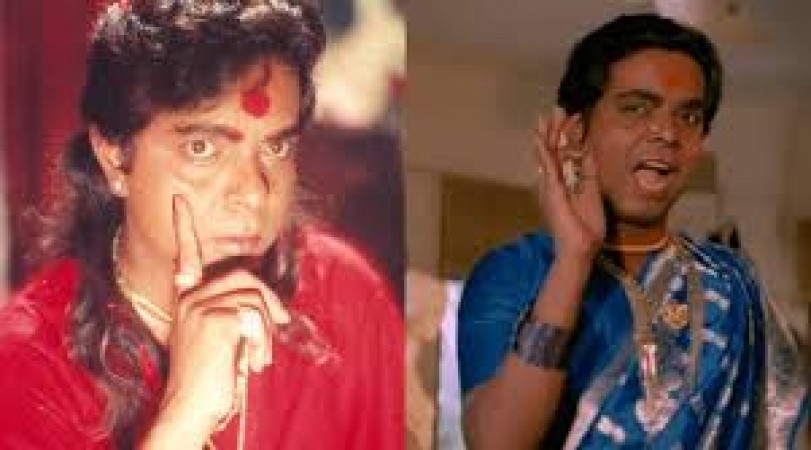
A cult favorite of Indian cinema, "Sadak," directed by Mahesh Bhatt, was published in 1991. The movie's success can be attributed to its engaging plot and endearing characters, including Maharani, who was played by the late, talented actress Sadashiv Amrapurkar. Maharani is a unique character who stands out for her nuance, audacity, and authenticity. The fact that her character was based on an actual encounter that took place in Mumbai's slums during Sanjay Dutt's turbulent drug days makes her even more remarkable. We will examine the Maharani character in "Sadak" and how Mahesh Bhatt was given the idea by Sanjay Dutt in this article.
In the Indian film industry, Sanjay Dutt, a well-known actor, has faced challenges, including a well-publicized battle with substance abuse. Dutt had a chance encounter in Mumbai when he was still high on drugs; this encounter later served as the model for the Maharani character. In the slums, he came across a transgender person, a person who deeply affected him. This encounter served as the catalyst for the development of the character who would play a crucial role in "Sadak."
Sadashiv Amrapurkar's character Maharani, a transgender owner of a brothel operating in the seedy underbelly of Mumbai, plays the role. She represents the underrepresented and frequently misunderstood transgender community in India through her character. When "Sadak" was first published in the early 1990s, transgender people experienced a great deal of prejudice and discrimination. This subject is highlighted and social norms are questioned by Maharani's persona.
Maharani has many facets, which is what makes her a memorable character. She is not a one-dimensional bad guy; rather, she is a complex person with her own goals and weaknesses. Maharani manages the tension between the dual functions of her brothel—a place of power and a prison—by combining ruthlessness and compassion.
In addition to running a brothel, Maharani stands up for young women who have been abused and trafficked. The contrast between her ruthless exterior and her compassionate interior is a representation of her inner conflict. In a society that frequently forces transgender people into marginalized roles, she personifies the struggles and contradictions of many transgender people.
Without the outstanding performance of Sadashiv Amrapurkar, the portrayal of Maharani would not have had the same impact. Amrapurkar, who is renowned for his acting versatility, immersed himself in the role and brought out all of its nuance and complexity. Numerous honors were bestowed upon him for his portrayal, including the esteemed Filmfare Award for Best Performance in a Negative Role.
The transformation of Amrapurkar into the Maharani was amazing. He not only took on a distinctive physical appearance, but he also honed the speech and mannerisms that gave the character a convincing and real air. Maharani continues to be regarded as one of the most recognizable characters in Indian cinema, which is a testament to his acting talent.
Maharani's character is key to moving the story along in "Sadak," and she has a significant impact on it. She becomes involved in the plot when the lead character of the movie, Ravi (Sanjay Dutt), asks for her assistance in rescuing his beloved Pooja (Pooja Bhatt) from the grasp of a perilous brothel owner named Maharani. As Ravi and Maharani come together in an unlikely alliance to save Pooja, the plot of the movie develops.
Maharani's involvement not only deepens the plot but also acts as a springboard for character growth. In spite of his initial hesitation and bias against Maharani, Ravi eventually learns to respect both her humanity and the intricate world she lives in. This change in Ravi's personality is evidence of Maharani's influence on those around her.
"Sadak" is more than just a love story; it also serves as a social critique of contemporary issues. Maharani's persona draws attention to the mistreatment transgender people endured in society. Her brothel acts as a microcosm of a society where exploitation, power dynamics, and desperation coexist. The movie explores the grim realities of human trafficking as well as the struggle for survival in a hostile urban setting.
It's important to point out that Mahesh Bhatt's choice to include Maharani's character in "Sadak" shows his tact as a director. Bhatt, who is renowned for his willingness to take on unusual and socially significant subjects, understood the significance of raising awareness of the difficulties faced by the transgender community. In doing so, he helped to humanize a marginalized group while also promoting awareness.
The portrayal of Maharani in "Sadak" is evidence of the ability of film to address social issues and subvert accepted social norms. Maharani stands out as a symbol of the marginalized transgender community and their complex existence in a judgmental society. It was inspired by an actual encounter Sanjay Dutt had while using drugs. This character was given depth and authenticity by Sadashiv Amrapurkar's superb portrayal, making her one of the most recognizable figures in Indian cinema.
Because of its compelling plot and endearing characters as well as its unflinching depiction of contemporary issues, "Sadak" continues to be a timeless classic. The persona of Maharani continues to inspire greater comprehension and acceptance while serving as a reminder of the challenges faced by the transgender community in India.
Priyanka Chopra's Most Iconic Movie
Rajinikanth Almost Quit Acting but Changed His Decision Thanks to This Bollywood Actor